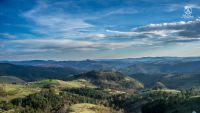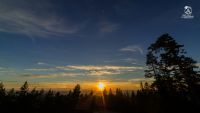Nature Park Zlatibor
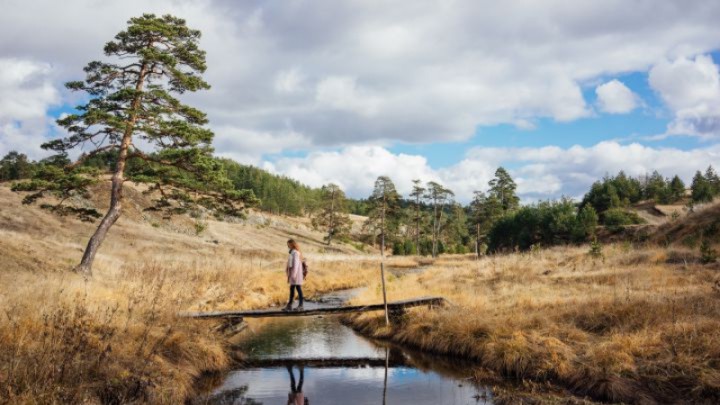
Zlatibor is an area of unique ecological, biological, cultural and aesthetic value, preserved and picturesque landscapes, meadows, pastures and centuries-old pine forests, with valuable objects of folk architecture, cultural and historical heritage and is recognizable for its health, tourism and recreational facilities.
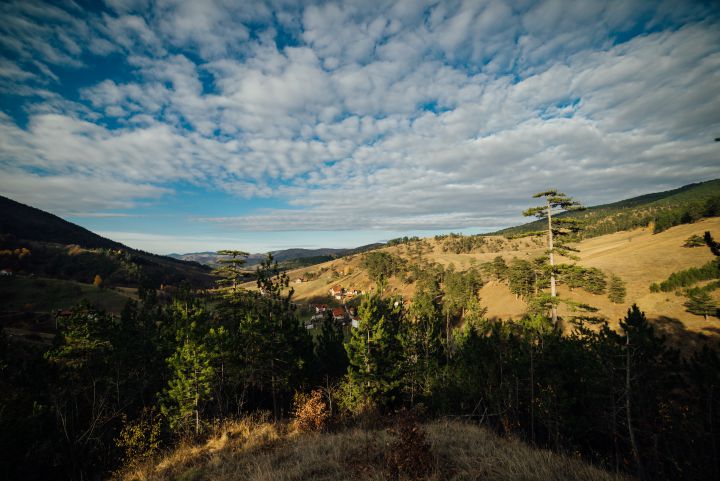
In 2017, the Government of the Republic of Serbia declared Zlatibor a Nature Park and entrusted its management to the State Enterprise for Forest Management “Srbijašume”. The immediate managerial activities are performed by the forest households "Uzice" and "Prijepolje", i.e. the working units of the Nature Park “Zlatibor" with its headquarters on Zlatibor.
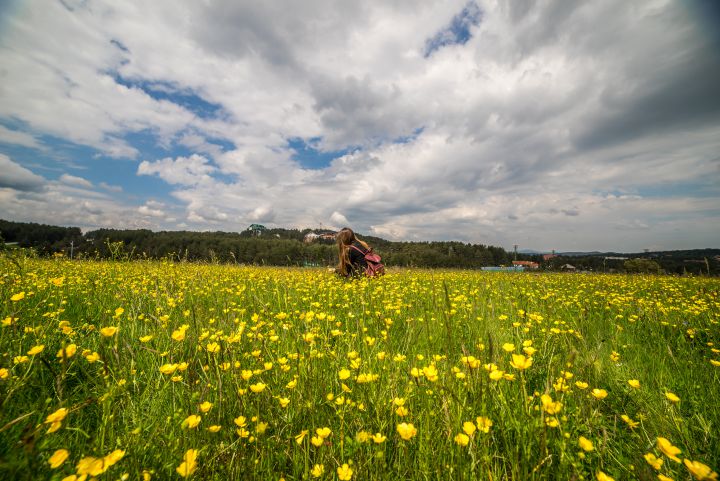
The Nature Park “Zlatibor" spans across the city of Uzice, the municipality of Cajetina, Nova Varos and Priboj, and includes: in the municipality of Chajetina – cadastral community Stublo and parts of cadastral communities Alin Potok, Branesci, Gostilje, Dobroselica, Drenova, Jablanica, Ljubis, Semegnjevo, Cajetina and Sljivovica; on the territory of the city of Uzice – part of the cadastral community of Mokra Gora; on the territory of the municipality of Nova Varos – parts of the cadastral communities of Bela reka, Draglica, Negbina and Senista; on the territory of the municipality of Priboj – parts of the cadastral communities of Banja, Kratovo and Racha.
The area of the Nature Park "Zlatibor" covers 41,923.26 ha, of which 18,158.83 ha (43.31%) are state-owned, 23,582.42 ha (56.25%) are private property, 93.68 ha (0.22%) are public property, 74.85 ha (0.18%) are social property, 13.48 ha (0.04%) are in other forms of ownership. The first level of protection occupies 4.69% of the entire area, 45.93% fall under the second category and 49.38% of the total area of the Nature Park "Zlatibor" are in the third category of protection.
In the area of the Nature Park "Zlatibor", there are protection regimes of I, II and III category.
The protection regime of the first degree, with a total area of 1,968.89 ha, or 4.69% of the Nature Park "Zlatibor", includes the following areas, i.e. localities:
– Viogor, with an area of 249.94 ha (100% state-owned), the municipality of Cajetina (CC Semegnjevo) and the city of Uzice (CC Mokra Gora);
– Crni Rzav, with an area of 374.96 ha (100% state-owned), the municipality of Cajetina (CC Jablanica and CC Branesci);
– Uvac Gorge, with an area of 1,121.10 ha (100% state-owned), site "3a" – 129.01 ha, site "3b" – 75.49 ha and site "3c" – 916.59 ha, municipalities: Cajetina (CC Jablanica, CC Dobroselica and CC Stublo) and Priboj (CC Raca and CC Kratovo);
– Griza Gorge, with an area of 222.83 ha (100% state-owned), the municipality of Cajetina (CC Stublo and CC Dobroselica).
The protection regime of the second degree, with a total area of 19,255.59 ha, i.e. 45.93% of the Nature Park "Zlatibor", includes the following areas, i.e. localities:
– Semegnjevska gora – Crni Rzav – Cavlovac, with an area of 5,858.89 ha (46.39% in state and 53.61% in private ownership), the municipality of Cajetina (CC Semegnjevo, CC Jablanica and CC Branesci) and the city of Uzice (CC Mokra Gora);
– Bijele vode, with an area of 523.74 ha (83.72% in state, 16.09% in private and 0.19% in public ownership), the municipality of Cajetina (CC Sljivovica and CC Branešci);
– Lake Ribnica, with an area of 283.42 ha (100% state-owned), the municipality of Cajetina (CC Jablanica and CC Cajetina);
– Ravni Tornik, with an area of 293.74 ha (94.14% in state and 5.86% in private ownership), the municipality of Cajetina (CC Dobroselica);
– Cigota, with an area of 3,910.35 ha (30.59% in state, 67.30% in private, 0.30% in public, 1.81% in social ownership), municipalities: Cajetina (CC Dobroselica, CC Alin potok, CC Gostilje, CC Ljubis and CC Cajetina) and Nova Varos (CC Draglica);
– Katusnica Gorge, with an area of 220.35 ha (41.57% in state, 58.43% in private ownership), the municipality of Cajetina (CC Drenova and CC Gostilje);
– Murtenica, with an area of 2,466.08 ha (50.75% in state, 49.25% in private ownership), municipalities: Cajetina (CC Ljubis) and Nova Varos (CC Negbina, CC Draglica and CC Bela reka);
– Area around the Uvac Gorge, with an area of 5,688.72 ha (27.18% in state, 72.72% in private ownership), municipalities: Cajetina (CC Jablanica, CC Stublo and CC Dobroselica), Nova Varos (CC Draglica and CC Senishta) and Priboj (CC Kratovo, CC Raca and CC Banja).
The protection regime of the III degree, with a total area of 20,698.78 ha, i.e. 49.38% of the Nature Park "Zlatibor", includes the remaining part of the protected area which is not covered by the protection regime of the I and II degree.
The special value of this protected area lies in its various forms of relief – gorges and mountain massifs. In the total diversity of geological material and geomorphological forms of relief, the following special features stand out – objects of geological heritage, of which 37 have been recorded in the Zlatibor plateau, then 17 geomorphological, 9 speleological, 3 architectural-petrological and finally 8 geological objects. Prerast, a stone bridge in Dobroselica, is one of the largest natural stone bridges in Serbia in terms of its dimensions. It is popularly known as Tockovica Cave or Supljica and is a natural rarity of exceptional importance for science, as well as for tourism on Zlatibor.
In the floristic sense, endemic relict (rare and endangered) species of vascular flora are of special value. The area of the Nature Park is a habitat for a total of 1,044 endangered plant species, of which 266 are of national and international importance, 34 species are in the category of strictly protected, and 112 in the category of protected species. Indigenous black pine forests and mixed black and white pine forests that cover the slopes of Zlatibor are classified as priority Natura 2000 habitats. Murtenica, Tornik and Cavlovac stand out as significant forest areas.
There are also strictly protected species of Heldreich’s pine (10 trees were discovered on Zlatibor), protected species of European bladdernut, Cornelian cherry, February daphne and birch. The European bladdernut trees are imposing in size and reach a height of up to 35 meters, and are several hundred years old. The first findings of the European bladdernut on Murtenica were presented by Josif Pancic back in 1887, when only two trees were discovered. The current 10 trees are under strict protection and must not be destroyed.
On Zlatibor, in the area of great importance for birds, the presence of 154 protected species (42% of all registered species in Serbia so far) has been recorded, of which 127 are strictly protected and 27 are protected species, and 19 have the status of game animals. Areas of the greatest importance for ornithofauna are: the gorges of the rivers Uvac, Dobroselica, Katusnica and Kamesina, as well as the mountain peaks Cavlovac, Murtenica, Tornik and Gruda. Particularly important bird species are from the group of birds of prey (golden eagle, gray falcon, snake eagle, griffon vulture, black vulture), hazel grouse, rock partridge, corn crake, Eurasian woodcock, and the spread of the population of the wood grouse from Tara, through Sargan and Viogor to Zlatibor is now also assumed.
About 38 species of mammals live permanently or occasionally in the area (which currently makes up 40% of species that have been registered in any way in the territory of the Republic of Serbia), most rodents (13 species), then beasts (12 species, three of which are under strict protection: otters, brown bears and marbled polecat) and insectivores (9), and only three species of bats have been identified so far.
Herpetofauna consists of 19 species (which is 38.30% of the total number of species inhabiting the territory of the Republic of Serbia), 8 species of amphibians (fire salamander, smooth newt, yellow-bellied toad, common toad, green toad, European tree toad, agile frog and green frog) and 11 species of reptiles (slow worm, wall lizard, sand lizard, European copper skink, European green lizard, grass snake, dice snake, Caspian whipsnake, Aesculap rat snake, smooth snake, nose-horned viper). All species of herpetofauna, except the wall lizards and European green lizards, have a certain protection status at the national level. In the ichthyofauna of the area, 19 species of fish have been recorded, two of which are strictly protected (spined loach, tench) and 13 are in the category of protected species. Several species are not autochthonous for the waters of Zlatibor, but were introduced by restocking into the artificially made Lake Ribnica and certain watercourses (tench, carp bream, asp, catfish, Eurasian carp, common nase, common barbel, common roach).
Due to its great natural wealth and diversity, Zlatibor is included in the selected butterfly areas. Among the representatives from the order of butterflies, the most numerous are the high mountain species of steppe and meadow habitats. In addition to directly endangered species, there are also those species for which this area is the boundary of their areal habitat, which indicates the importance of protecting their habitats. Such are: Pontia daplidice (Linnaeus, 1758) – western boundary of the areal habitat and Colias hyale (Linnaeus, 1758) – southern boundary (Pieridae). One Southern Balkan species, Lycaena candens (Herrich-Schaffer, 1844) (Lycaenidae), should also be mentioned. It is necessary to mention Quercusia quercus (Linnaeus, 1758) (Lycaenidae), an exclusively monophagous species that inhabits oak forests, and is therefore a sensitive species.
The hydrological richness and diversity of the area is evidenced by a significant number of representative water phenomena: rivers, lakes, waterfalls, cascades and springs. One of the most valuable areas is the Uvac River valley with its numerous valley meanders, whose waters, according to existing indicators, are of first class quality. The basis of this protected area’s river network – watercourses of the rivers Crni Rzav, Katusnica and Uvac and all their tributaries. On the list of hydrological heritage objects of Serbia, which are the most important water phenomena of our country, there are three objects: Crni Rzav, the waterfall and cascades of the Gostilje Stream and the bogs of Bijele vode.
On the territory of today's protected area of the nature park, the first settlements were formed in the river valleys. On the terrains with higher altitudes, the locals built huts, which were used by cattle breeders who brought cattle to graze during the warmer periods of the year. Among the larger settlements in the protected area are the villages of Semegnjevo, Jablanica, Stublo, Dobroselica, Ljubis and Gostilje. They belong to the villages of the so-called broken, i.e. old Vlachs type. In suitable places, on the sunny sides and near the spring, temporary cattle-breeding facilities sprang up – huts, which at first were the only settlements on the Zlatibor area. The huts were made of black pine "stolovas", whose wood is healthy and full of resin, so the houses were long-lasting and resistant to moisture. They were made in two traditional ways – “u cert” (special way of joining wooden structures) and “u stubove” (using pillars), and they represent objects of traditional folk architecture and as such are of great importance for the protection and preservation of cultural and historical values of the Zlatibor region.
The special beauty and recognizability of the protected area is given by the traditional way of life and spirituality of the old Vlach area. The basic value is represented by fortified immovable cultural goods: the log cabin church in Donja Jablanica, the log cabin church in Dobroselica and the Uvac monastery complex, as well as several recorded cultural assets.
Due to everything that Zlatibor has, it can be said that it provides ideal conditions for the development of health, sports and recreation, congress and business, hunting, transit and rural tourism, and the Nature Park area plays an extremely important role in further tourism development.





